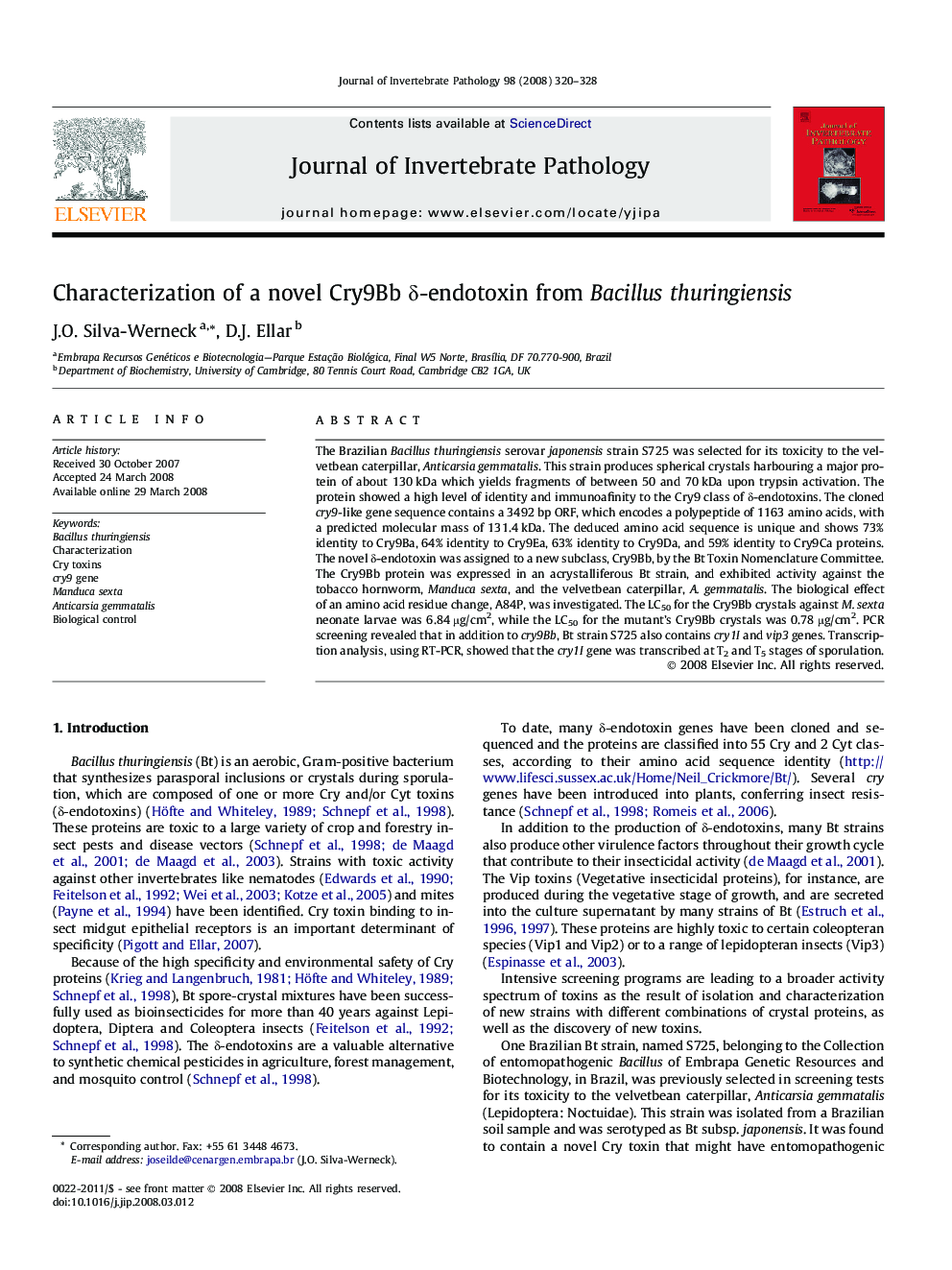| Article ID | Journal | Published Year | Pages | File Type |
|---|---|---|---|---|
| 4558596 | Journal of Invertebrate Pathology | 2008 | 9 Pages |
The Brazilian Bacillus thuringiensis serovar japonensis strain S725 was selected for its toxicity to the velvetbean caterpillar, Anticarsia gemmatalis. This strain produces spherical crystals harbouring a major protein of about 130 kDa which yields fragments of between 50 and 70 kDa upon trypsin activation. The protein showed a high level of identity and immunoafinity to the Cry9 class of δ-endotoxins. The cloned cry9-like gene sequence contains a 3492 bp ORF, which encodes a polypeptide of 1163 amino acids, with a predicted molecular mass of 131.4 kDa. The deduced amino acid sequence is unique and shows 73% identity to Cry9Ba, 64% identity to Cry9Ea, 63% identity to Cry9Da, and 59% identity to Cry9Ca proteins. The novel δ-endotoxin was assigned to a new subclass, Cry9Bb, by the Bt Toxin Nomenclature Committee. The Cry9Bb protein was expressed in an acrystalliferous Bt strain, and exhibited activity against the tobacco hornworm, Manduca sexta, and the velvetbean caterpillar, A. gemmatalis. The biological effect of an amino acid residue change, A84P, was investigated. The LC50 for the Cry9Bb crystals against M. sexta neonate larvae was 6.84 μg/cm2, while the LC50 for the mutant’s Cry9Bb crystals was 0.78 μg/cm2. PCR screening revealed that in addition to cry9Bb, Bt strain S725 also contains cry1I and vip3 genes. Transcription analysis, using RT-PCR, showed that the cry1I gene was transcribed at T2 and T5 stages of sporulation.
